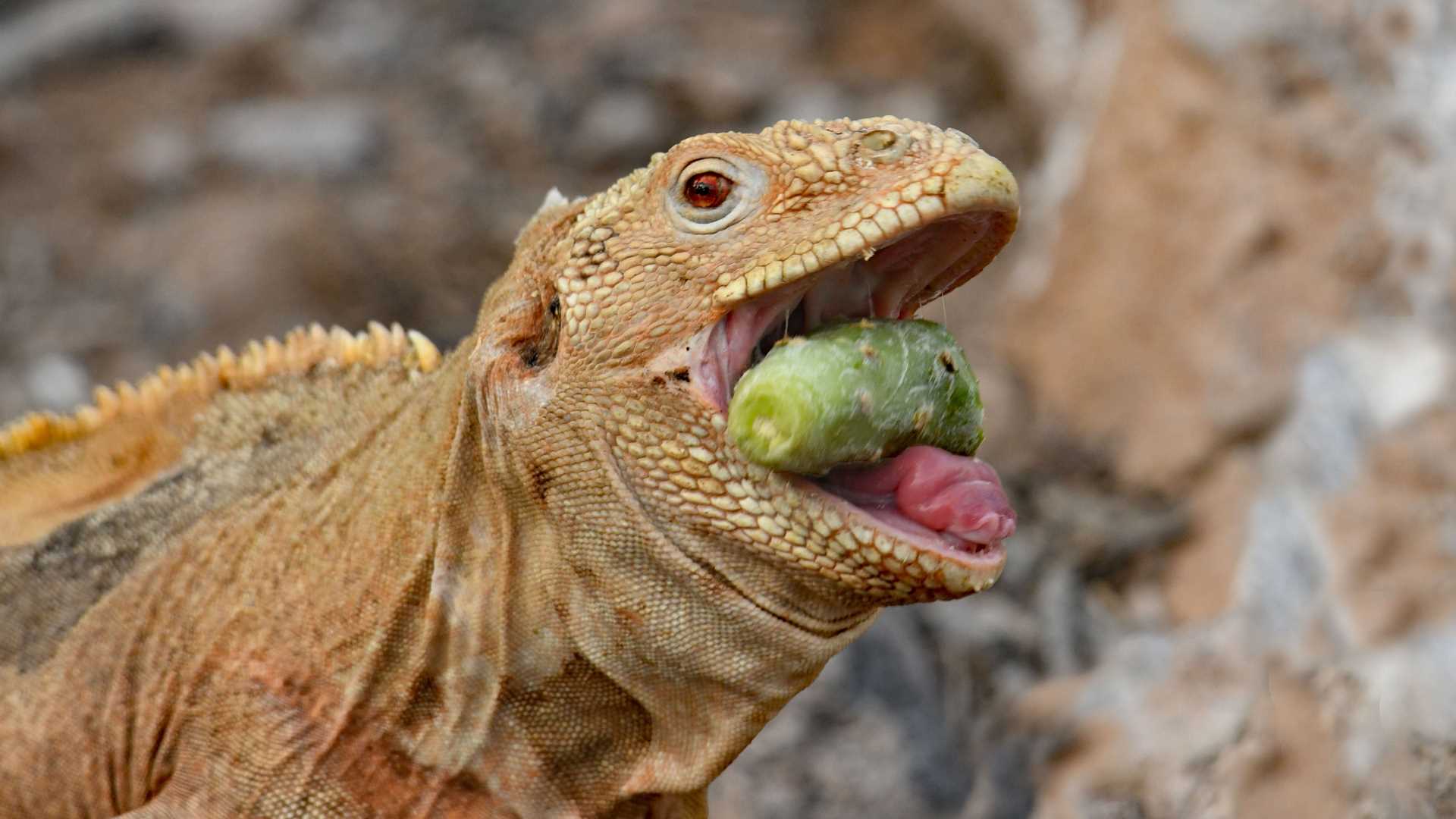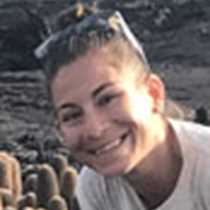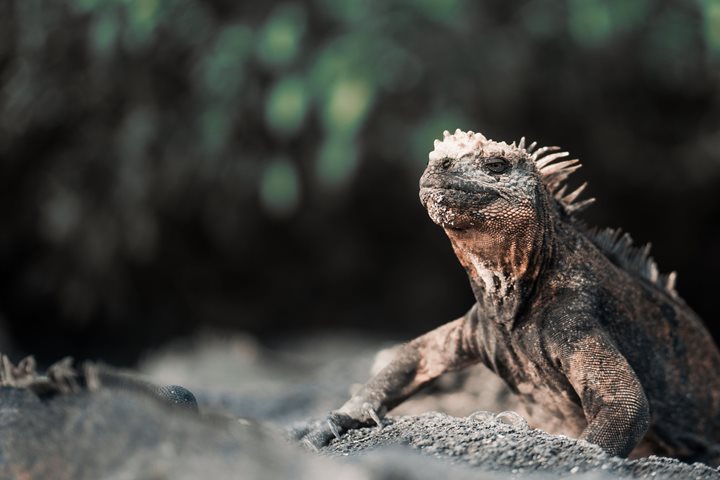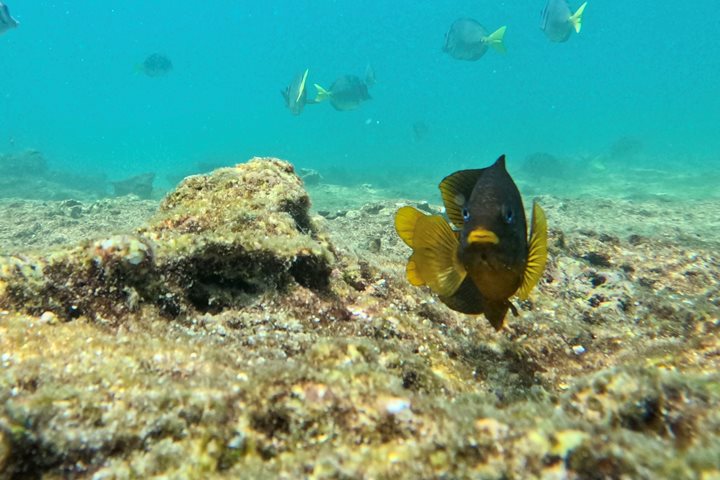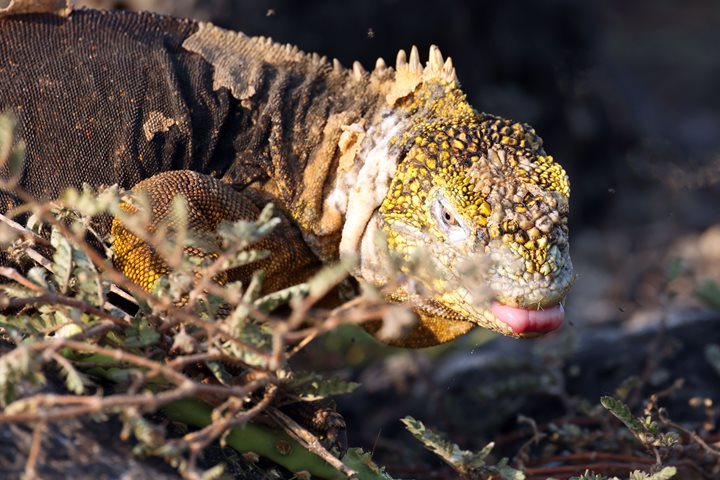Today was a wonderful day in the Galapagos Islands. We started early morning so we could enjoy the wildlife activity. After a delicious breakfast, we boarded the Zodiacs. Our first landing spot was a very small islet with many surprises. Yellow land iguanas were waiting for us at the landing area. We enjoyed discussing the habitat, behaviors, and interesting facts about the incredible reptiles, and we learned about their ecology. Swallow-tailed gulls were another highlight this morning. We spotted many breeding couples and enjoyed their friendly and tame behavior. We also observed sea lions and tropicbirds on our morning walk, and we enjoyed their sounds and colors. After our walk, we came back to the ship and set sail to a new island, Santa Fe. Our guests explored the island by kayak, and they also enjoyed the opportunity to snorkel. We observed many different species, including blue-footed boobies and playful sea lions, the stars of the show as they played in the water. For the rest of the afternoon, we went exploring by foot on a hike that took us through a prickly pear cactus and palo santo tree forest. Our goal was to find one of the unique species on this island: the Santa Fe land iguana. This species only lives here and is seen nowhere else in the world. The experience was complete after we saw their incredible feeding behavior. They mainly eat cactus on this island. We also observed a big colony of sea lions. They greeted us right at our landing! Finally, fast-moving lava lizards and even a Galapagos hawk were added to our list of wonders today!
- Daily Expedition Reports
- 28 Jul 2022
South Plaza and Santa Fe Islands, 7/28/2022, National Geographic Islander
- Aboard the National Geographic Islander
- Galápagos
Wild Galápagos & Peru Escape
VIEW ITINERARYSign Up for Daily Expedition Reports
Fields with an asterisk (*) are required.
Enter travel details to receive reports from a single expedition
Send Daily Expedition Reports to friends and family
*By clicking the submit button, I authorize Lindblad Expeditions to email me; however, I am able to unsubscribe at any time. For more details, see our Privacy Policy.
Please note: All Daily Expedition Reports (DERs) are posted Monday-Friday,
during normal business hours. DERs are written onboard the ship only and do
not apply to land-based portions of expeditions.

